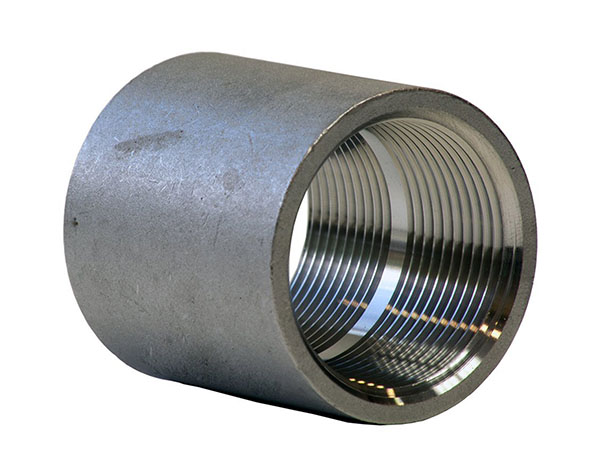Stainless steel coupling are important components used for connection, steering or sealing in pipeline systems, and are widely applied in fields such as petrochemicals, municipal water supply and drainage, food and medicine, shipping and mechanical manufacturing. With its excellent corrosion resistance, high-temperature resistance and good strength,
stainless steel pipe coupling have become the first choice for high-reliability pipeline engineering.

As a type of
pipe fitting, stainless steel pipe joints can be classified into the following categories based on connection forms and application scenarios:
Threaded coupling A mechanical connection is formed by the meshing of the external thread at the pipe end and the internal thread of the coupling, and sealing is achieved by using sealing tape (PTFE) or sealing gasket.
Features: Easy installation, no welding required; Suitable for medium and low voltage systems.
Specifications: International and British thread standards such as NPT and BSPT.
Butt-weld coupling: After aligning the pipe end with the couplingend, a full through weld seam is performed along the axial direction. After welding, the coupling and the pipe become an integrated structure.
Features: After butt welding, it has high overall strength, excellent pressure resistance and temperature resistance, and is suitable for high-pressure and high-temperature pipelines.
Applicable pressure: Up to ANSI Class 3000 or above.
Socket welding coupling: By inserting the pipe section into the "socket" or "short pipe neck" of the interface, leaving space for the weld seam, a circumferential seam welding is carried out. The weld seam is on the outer side of the pipe, and there is no protrusion of weld metal inside, which is conducive to the flow of the medium.
Features: After the pipe end is inserted into the coupling and welded, the force on the weld seam is small, which is convenient for centering and suitable for small-diameter high-pressure applications.
Pipe diameter range: Usually DN6 - DN50.
Ferrule type coupling: It is composed of a coupling body, a ferrule and a nut. After the pipe is inserted into the coupling body, the nut is tightened. The ferrule is deformed under pressure, adheres tightly to the pipe wall and compresses to form a metal seal. Common single and double ferrule structures are available. Double ferrule structures are easier to disassemble and assemble and offer more reliable sealing.
Features: No welding connection, sealed by ferrule compression, and good performance in repeated disassembly and assembly; It is commonly seen in instrument pipelines.
Material: Commonly used 304/316L stainless steel ferrule and fitting body.
Quick-plug type coupling: It adopts a male and female quick-plug design, with an internal spring-controlled quick-lock pin and ball spring structure, achieving the operation of "push in to lock and press to unlock". The sealing rings are mostly made of fluororubber (FKM) or PTFE to ensure low leakage during insertion and removal.
Features: It can be quickly plugged and unplugged with one hand, suitable for occasions that require frequent disassembly and assembly as well as blind plugging, such as automated production lines.
Seals: Fluororubber or polytetrafluoroethylene gaskets are usually adopted.
Standards and Specifications
ASTM: The main contents include the material grade (A240, A312), dimensions, mechanical properties, etc.
ANSI/ASME: Pressure Class (Class 150-3000), dimensions, weld form.
DIN: Pipe thread (DIN 2999), socket weld dimensions, etc.
ISO: Dimensions, tolerances, pressure grades, etc. of pipe fittings.
Common Faults and maintenance methods:
Leakage: The threaded joint needs to be tightened regularly and the sealing tape replaced. The ferrule joint needs to be inspected for deformation of the ferrule.
Corrosion: Dry connection between different metals is strictly prohibited. Cathodic protection can be installed or higher-grade stainless steel can be selected.
Fatigue cracks: Regular non-destructive testing should be conducted in high-temperature and vibrating environments, with a focus on inspecting the weld area.
